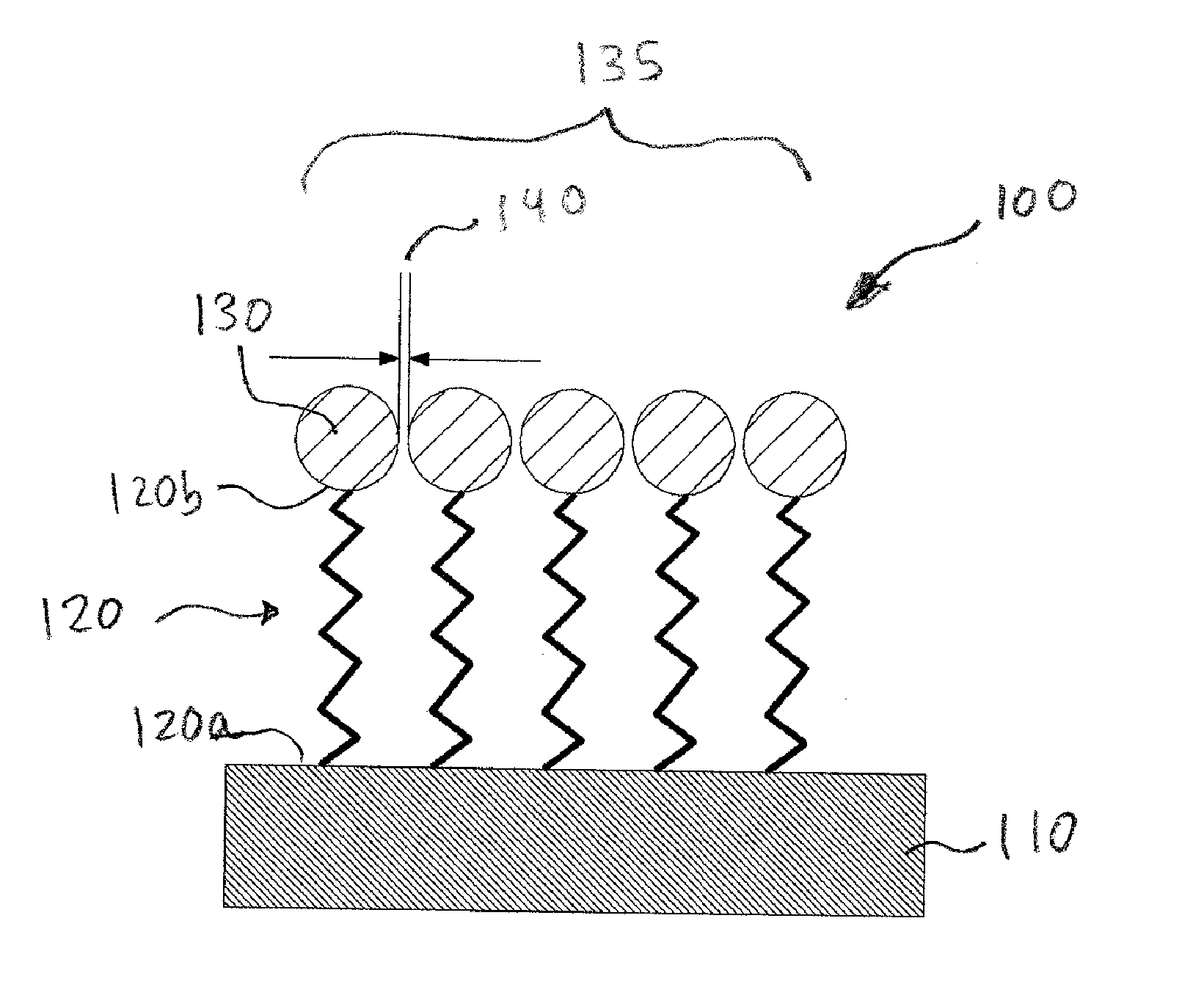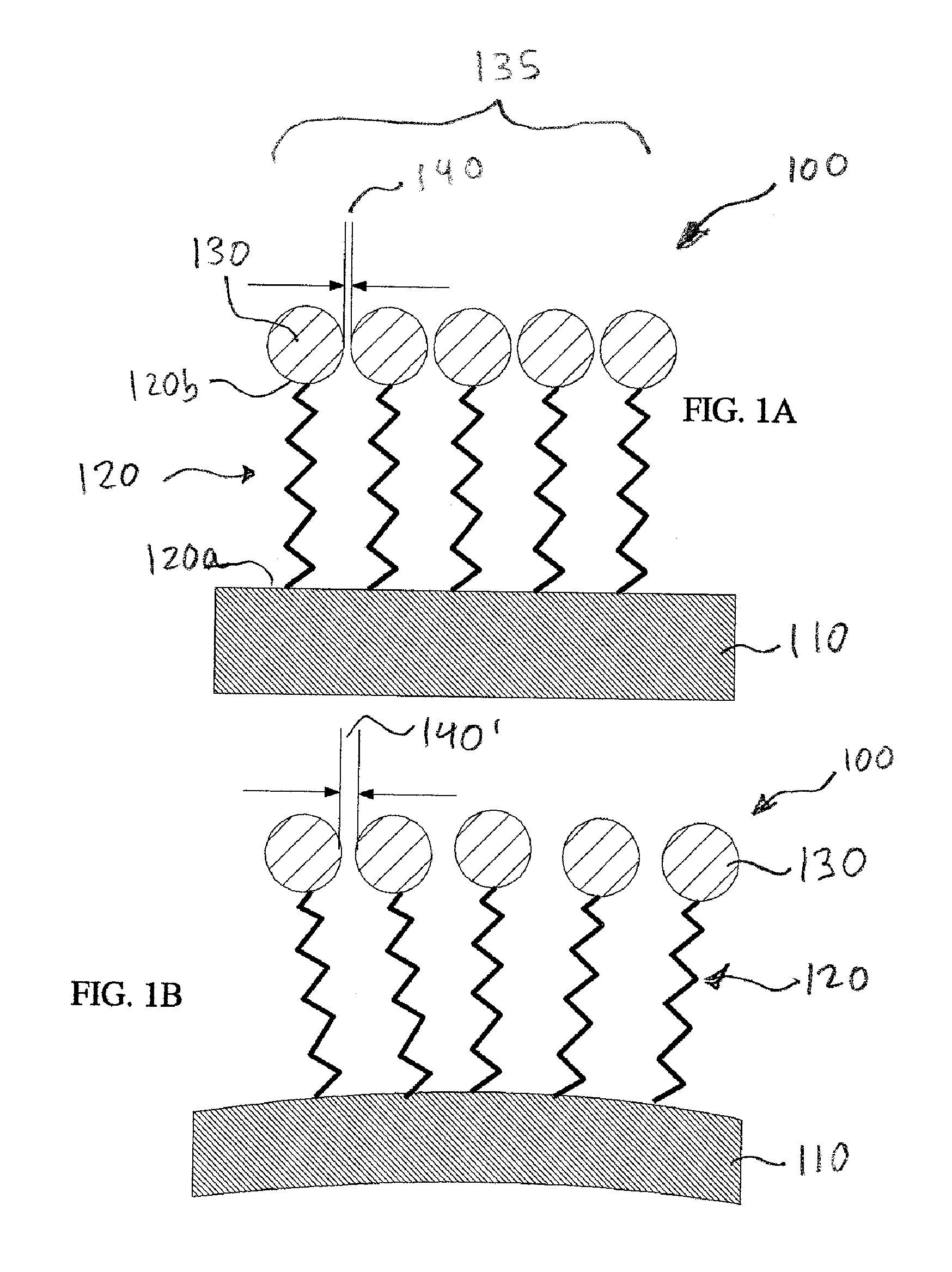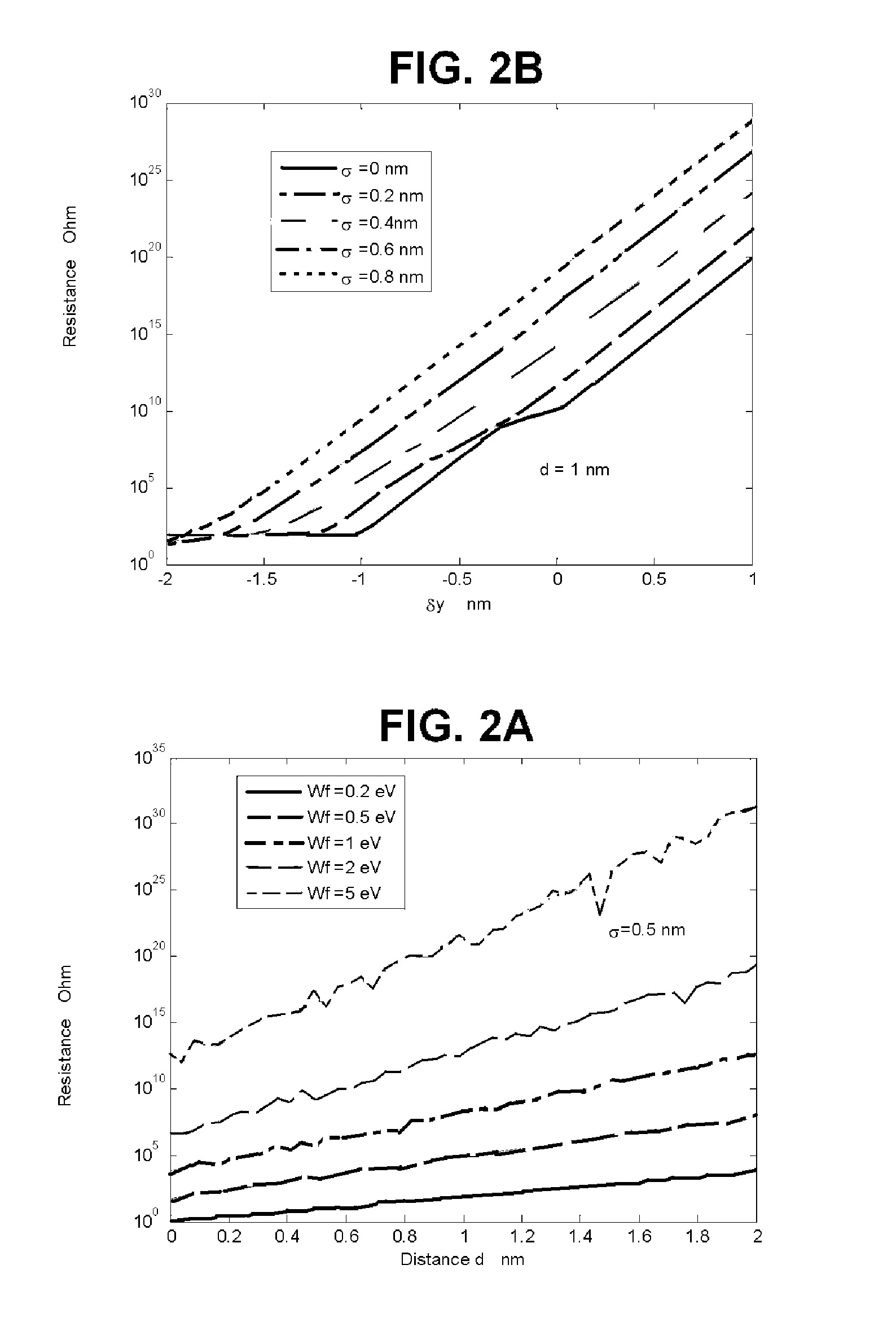Nanoscale Sensor
a sensor and nano-scale technology, applied in the field of nano-scale sensors, can solve the problems of increasing the size of the sensor, limiting the life span, and causing the failure of structures and engineering materials, and achieve the effect of high reliability
- Summary
- Abstract
- Description
- Claims
- Application Information
AI Technical Summary
Benefits of technology
Problems solved by technology
Method used
Image
Examples
Embodiment Construction
[0027] Referring to FIGS. 1 through 15, wherein like reference numerals refer to like components in the various views, there is illustrated therein a new and improved sensor, generally denominated 100 herein.
[0028] In accordance with the present invention, a nanoscale device is constructed on a non-rigid substrate 110. As shown in FIG. 1A, various long chain molecules 120 or high aspect ratio molecular assemblies are attached at one end 120a to the non-rigid substrate to extend upward from the substrate to form a dielectric or non electrically conductive column. On the other end of the column 120b is attached substantially equiaxed particles 130. The column distribution on the substrate is adjusted relative to the dimensions of the substrate to form a densely packed array of particle 135 such that the columns 120 act as spacers separating the particle 130 in the array 135 away from the substrate. Depending on the spacing and size of the molecular species that forms columns 120 and ...
PUM
 Login to View More
Login to View More Abstract
Description
Claims
Application Information
 Login to View More
Login to View More - R&D
- Intellectual Property
- Life Sciences
- Materials
- Tech Scout
- Unparalleled Data Quality
- Higher Quality Content
- 60% Fewer Hallucinations
Browse by: Latest US Patents, China's latest patents, Technical Efficacy Thesaurus, Application Domain, Technology Topic, Popular Technical Reports.
© 2025 PatSnap. All rights reserved.Legal|Privacy policy|Modern Slavery Act Transparency Statement|Sitemap|About US| Contact US: help@patsnap.com



